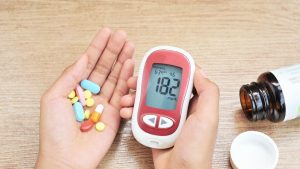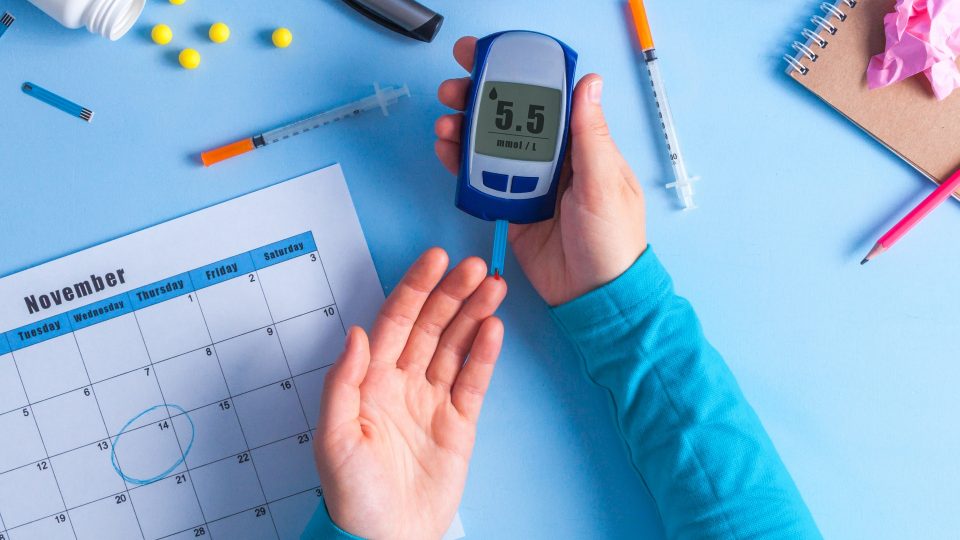Neuropathy is nerve damage. In diabetes mellitus (both the first and second types), damage to the nerve fibers is the most frequent complication. This process can be called, in a way, “sugaring of nerve fibers” with a violation of their inherent function. And since there are nerve fibers in all internal organs, accordingly, the manifestations of diabetic neuropathy can be very different.
Today I will focus on the most common form of complications of diabetes mellitus – distal symmetric sensorimotor polyneuropathy. What is it characterized by:
decrease or loss of the ability to determine temperature;
tingling in the limbs, burning sensation;
pain, cramps, usually worse at night;
numbness and loss of sensation, “chills”,
a feeling of chilliness and coldness in the limbs (while the feet are warm to the touch);
swelling of the feet;
skin changes – dryness, peeling, redness of the plantar part of the foot, increased foot moisture;
the formation of “dry” calluses, open wounds or ulcers on the feet.
atypical, hypersensitivity of the skin;
inability to feel movements in fingers or feet;
loss of balance;
decreased muscle strength in the legs;
deformities of the fingers or feet (the so-called hammer-like deformity);
Some people describe polyneuropathy as “not being able to feel where my legs are when I walk.”
Look for these symptoms in you or a family member with diabetes.
The most formidable complication of this condition is the formation of ulcers (usually after an injury, most often in the country or on vacation, when walking barefoot), spontaneous ulcers are more characteristic not for neuropathy, but for impaired blood flow in the vessels of the legs (atherosclerosis).
In medicine, the HCC scale exists to assess the severity of diabetic neuropathy. You can fill it out for yourself or your relatives with diabetes mellitus and bring it to your doctor’s appointment, which will help you quickly determine the correct therapy, the duration of therapy.
All symptoms are scored from 0-2. So,
if there is no symptom, we set 0 points,
the symptom is present during the day – 1 point, the symptom always intensifies at night – 2 points:
tingling sensation in the feet
burning
numbness in the fingers
pain (shooting, piercing, jerking pains, less often – dull, aching)
convulsions
irritation (aggravated by touching the bedding – hyperesthesia).
Let’s summarize the points – the more points, the stronger the degree of neuropathy. The doctor will conduct the necessary medical examination of the feet at the appointment.
What clinical signs of polyneuropathy can be detected by a doctor during a neurological examination?
decreased vibration sensitivity in the feet, determined using a tuning fork;
decrease or absence of Achilles reflexes;
decreased pain sensitivity when pricked with a needle;
decrease in temperature sensitivity when determining it with a special tool Thiotherm or test tubes with hot and cold water;
decreased knee reflexes;
decreased sensitivity to touch when it is determined with a special hair (monofilament) or cotton wool.
Less common objective signs include impaired sense of movement in the joints, muscle weakness and muscle loss.
In addition, the presence of neuropathy can be confirmed by instrumental research – electroneuromyography.
Let’s move on to treatment. Treatment of neuropathy primarily consists in the normalization of carbohydrate metabolism (with the help of hypoglycemic drugs or insulin), prevention of atherosclerosis, and then metabolic therapy is used: preparations of alpha-lipoic acid, B vitamins, Actovegin, neuromidin, gabapentin (thebantine), NSAIDs, pain relievers different classes, sometimes antidepressants according to the scheme prescribed by the doctor.
The first days of treatment, the pain may intensify, and this is not bad – it means that the sensitivity in the nerve fibers can be restored, with time there will be improvement – this is always individual.
In addition to an endocrinologist, a neurologist, a podiatrist, a specialist in diabetic foot, is also involved in the treatment and diagnosis of diabetic changes in the feet.
Perform a thorough examination of your feet https://en.wikipedia.org/wiki/Foot yourself daily. If you notice calluses, redness of the skin, cuts – see your doctor immediately. It is advisable to quit smoking; alcohol is also not recommended.
If there are complaints, a doctor’s examination should be carried out 1 time in 6-12 months. After all, the earlier the treatment is started, the greater the effect can be achieved, not only by stopping the progression of the disease, but also by improving the condition of the peripheral nerves.
Stay healthy!
